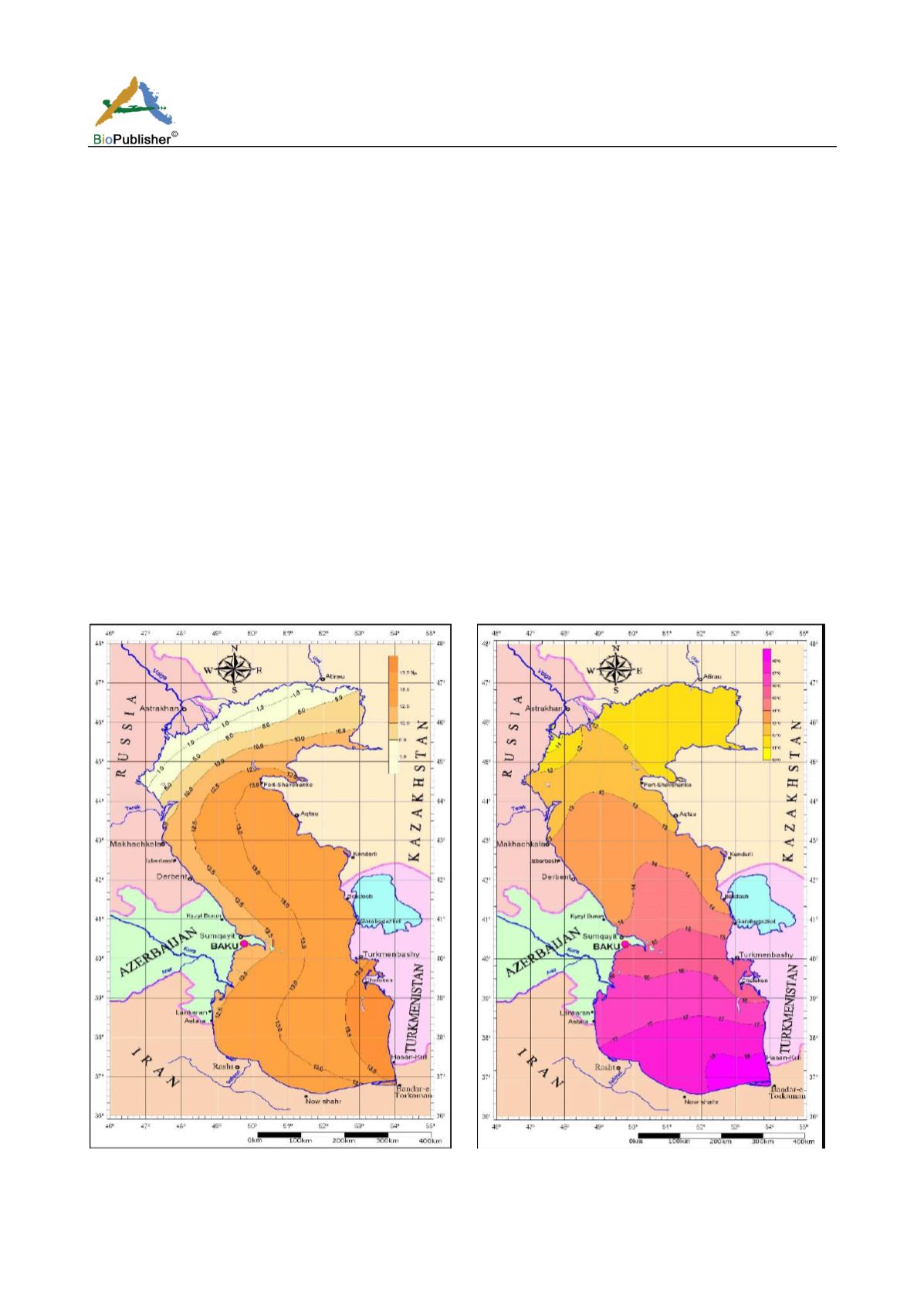
International Journal of Marine Science, 2017, Vol.7, No.3, 19-30
28
2.7 Salinity
The wide range of long-term mean changes of Caspian Sea water salinity is between 1 and 13.5 per thousand. This
variance is especially noticeable in north Caspian because of influence of Volga River current. However, the
salinity variance is lower in other parts of Caspian Sea. As showed in the salinity map (Figure 10), the salinity fall
in Volga river estuary in comparison to Caspian Sea south east water area is about 12.5 per thousand. This salinity
rate is the very isohaline line in the western margin of south and middle Caspian. In other parts of Caspian Sea,
salinity rate is between 13 and 13.5 per thousand. In the Absheron region, the isohaline curve by a little rotation
makes a bulge which represents the saline water mass stretch with the salinity of 12.5 per thousand in this area.
The flow of rivers’ sweat water causes in this phenomenon. These rivers first flow into the middle Caspian from
the western coast; then, by entrance of other currents they fork to two tributaries which flow in cyclone and
anticyclone directions in the Caspian Sea. The lack of river network in Caspian Sea southeast causes in salinity
rise of seawater in this region (13.5 per thousand). This particular situation can be clearly observed within the
Cheleken peninsula region. In winter months, the total salinity rise generalizes in all the Caspian Sea water area,
even the northern part of Caspian Sea is not an exception in this regard. In fact, in the cold season, the major part
of Caspian Sea water area has the isohaline salinity range of about 12.5-13 per thousand (Figure 10). In this
season, because of glacial the effect of rivers’ sweat water on the coastal waters’ salinity declines and in the
western areas of Caspian Sea the salinity stabilizes at the rate of 12.5 per thousand. In summer, the horizontal
variability of this salinity index severely rises in north Caspian and lies at the range of 1-12 per thousand. In the
continental slope of the northern part, in a short period the changes reach to 8 to 12 per thousand. It should also be
mentioned that sea water salinity index in some parts is observed at its extreme level. Although, the salinity of
Garaboghazkol bay water with the rate of 300 per thousand is an exception.
Figure 9 The annual average of Caspian Sea water surface layer
temperature
Figure 10 Average annual salinity of Caspian


